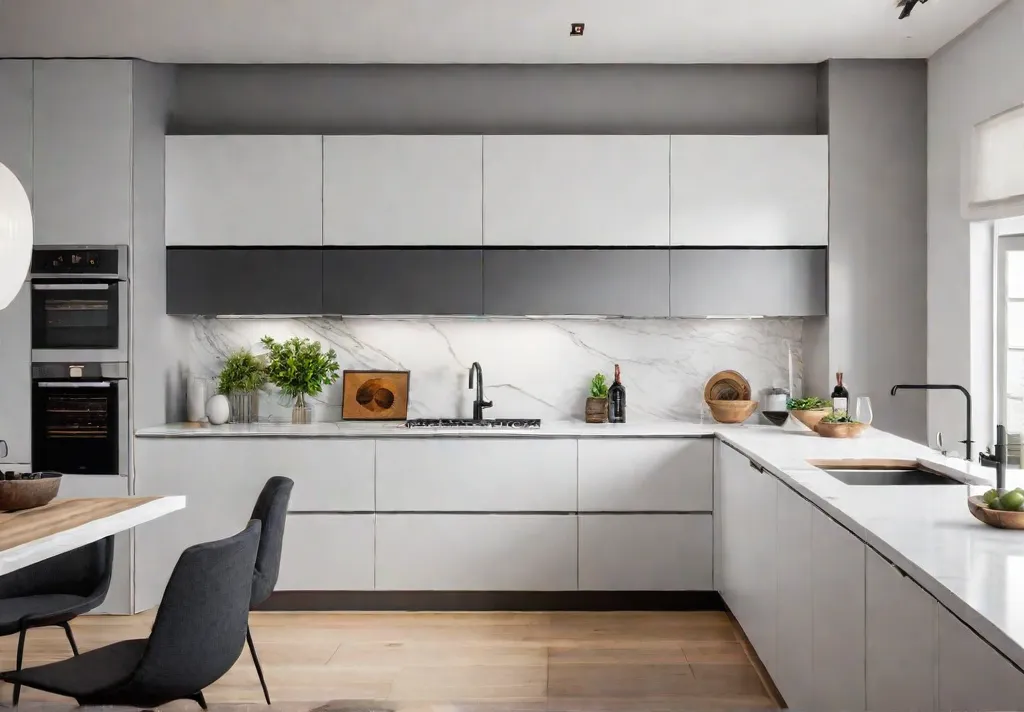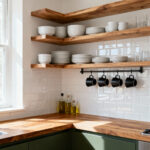Hey there, fellow kitchen enthusiasts! Craig here, and boy, do I have a treat for you today. We’re about to embark on a journey through the wonderful world of small kitchen appliances – those mighty little gadgets that can turn even the tiniest cooking space into a culinary powerhouse. As someone who’s spent years navigating Atlanta’s charming but cozy kitchens, I’ve learned a thing or two about making the most of every square inch.
Now, I know what you’re thinking – “Craig, my kitchen’s already bursting at the seams!” But trust me, with the right know-how and a dash of creativity, we can transform your kitchen from cluttered to efficient faster than you can say “instant pot.” So, grab a cup of joe, pull up a chair, and let’s dive into the ultimate guide to small kitchen appliance selection. Whether you’re a seasoned chef or a microwave maestro, I promise you’ll find some game-changing tips and tricks to make your kitchen work smarter, not harder.
Space-Saving Solutions: Compact Appliances for the Modern Kitchen
Today we’re diving into the world of compact appliances – those little kitchen heroes that pack a big punch in small spaces. As someone who’s renovated more than his fair share of Atlanta’s charming but cozy kitchens, I can tell you firsthand that these space-savers are worth their weight in gold (or should I say, in counter space?).
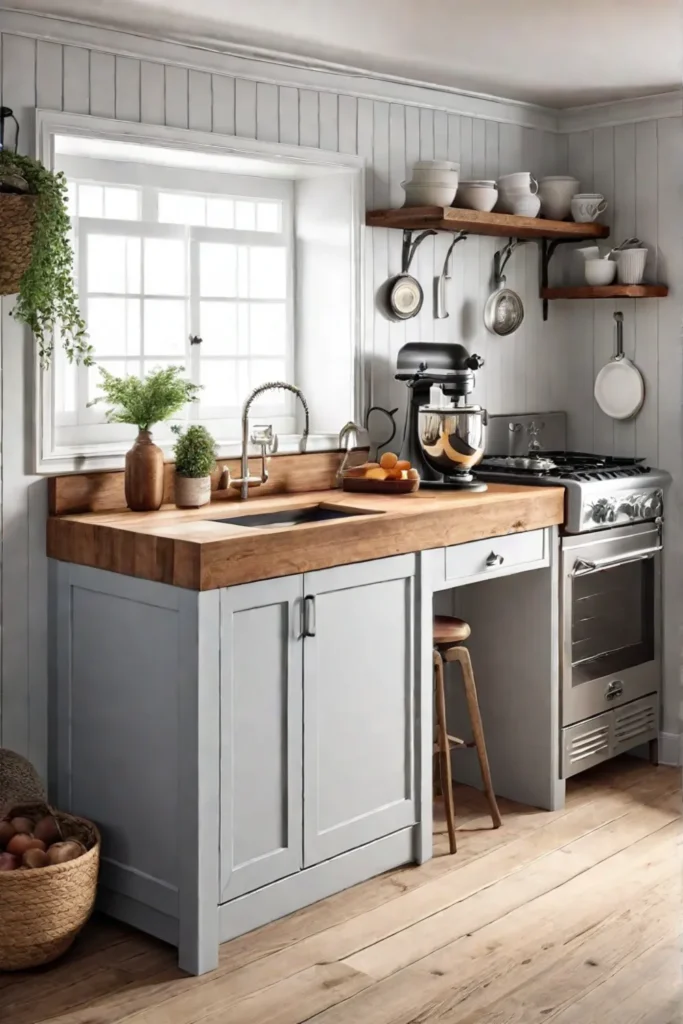
The Power of Small: Top Compact Appliance Picks
Let’s face it, kitchens aren’t getting any bigger, but our love for gadgets sure is! Did you know that according to a recent study, 60% of new homeowners are opting for smaller, more efficient kitchens? It’s no wonder compact appliances are having their moment in the spotlight.
Here are some of my favorite space-saving superstars:
- Slim Toasters: These narrow beauties toast just as well as their bulky cousins but take up half the space.
- Mini Food Processors: Perfect for whipping up quick sauces or chopping herbs without commandeering your entire counter.
- Compact Dishwashers: Yes, they exist! And they’re a game-changer for small households.
- Induction Cooktops: Sleek, efficient, and often portable – what’s not to love?
Measuring Up: Ensuring a Perfect Fit in Your Kitchen
Now, before you go on a compact appliance shopping spree (trust me, I’ve been there), let’s talk about measurements. Nothing’s worse than bringing home your shiny new gadget only to find it doesn’t fit. Here’s a quick guide:
- Measure your available space three times. Yes, three. I learned this the hard way!
- Don’t forget to account for ventilation space, especially for items like microwaves.
- Consider the appliance’s footprint when in use. That sleek blender might expand when you add the pitcher.
On average, compact appliances are about 20-30% smaller than their standard counterparts. For example, a compact microwave might be around 18 inches wide, compared to a standard 24 inches.
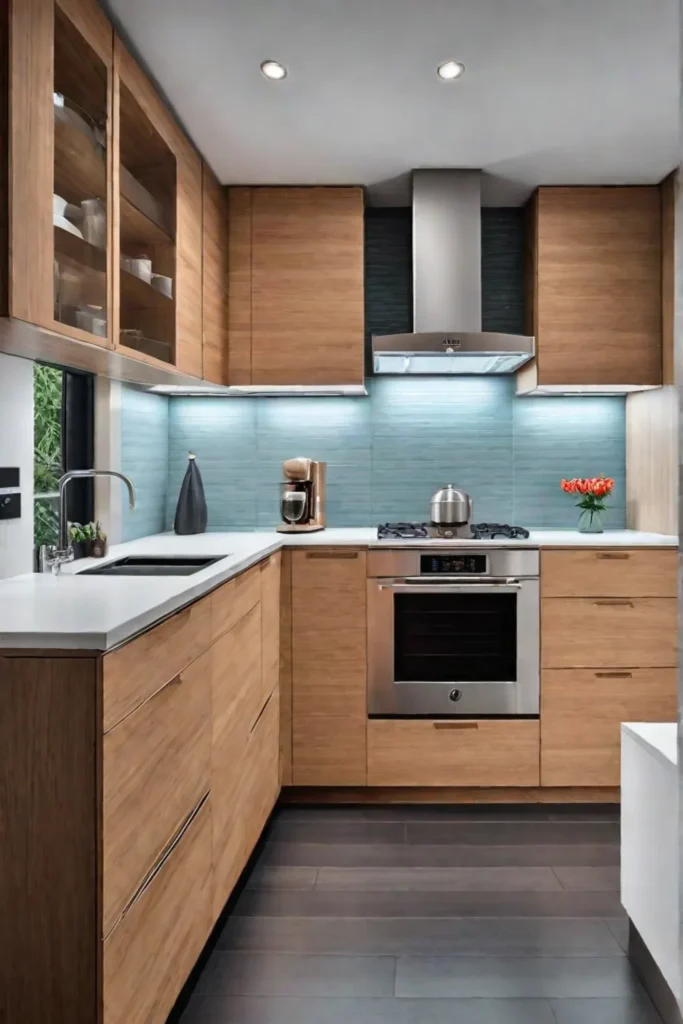
The Benefits of Going Compact
- Free up precious counter space (more room for your sourdough experiments!)
- Portability – great for renters or frequent movers
- Energy efficiency – smaller often means less power consumption
- Perfect for occasional use items (I’m looking at you, waffle maker)
Remember, going compact doesn’t mean compromising on quality or functionality. Many of these appliances are just as powerful as their larger counterparts – they’re just better at Tetris!
As we wrap up our tour of the compact appliance world, I can’t help but get excited about the possibilities. These little wonders are proof that good things do come in small packages. They’re not just space-savers; they’re game-changers for the modern kitchen.
Speaking of game-changers, have you ever wondered about appliances that can do more than one job? Well, you’re in luck! In our next section, “Doing More with Less: The Rise of Multi-Functional Appliances,” we’ll explore the Swiss Army knives of the kitchen world. Trust me, you won’t want to miss it!
Doing More with Less: The Rise of Multi-Functional Appliances
I bet you have seen your fair share of cramped kitchens, I can tell you that multi-functional appliances are a game-changer. These clever gadgets are like the Swiss Army knives of the kitchen world, packing multiple functions into one sleek package. Let’s dive into how these appliances can transform your cooking space and save you some serious cash.

Multitasking Marvels: Top Multi-Functional Appliance Recommendations
- Instant Pot: This bad boy is my go-to recommendation for small kitchens. It’s a pressure cooker, slow cooker, rice cooker, steamer, and yogurt maker all in one. I’ve seen it replace up to seven individual appliances in some kitchens!
- Air Fryer Ovens: These nifty devices combine the functions of an air fryer, toaster oven, and often a rotisserie. Perfect for whipping up crispy fries or roasting a whole chicken without heating your entire kitchen.
- Blender-Food Processor Combos: Why clutter your countertop with two appliances when one can do it all? From smoothies to chopped veggies, these dual-purpose machines have got you covered.
- Multi-Cookers with Sous Vide: The latest multi-cookers are upping their game by adding sous vide capabilities. Now you can pressure cook, slow cook, and precision cook all with one appliance.
Making the Choice: Deciding Which Appliances You Truly Need
Folks, I can’t stress this enough – before you go all-in on multi-functional appliances, take a good hard look at your cooking habits. Here’s a quick guide to help you decide:
- Track your cooking: For a week, jot down every appliance you use. You might be surprised at what you need versus what’s just taking up space.
- Consider your cuisine: If you’re big on Asian cooking, a rice cooker function might be essential. Love baking? Look for appliances with convection settings.
- Think about frequency: If you only make smoothies once in a blue moon, maybe that high-powered blender isn’t a must-have.
- Space vs. Function: Sometimes, one larger multi-functional appliance can replace several smaller ones, freeing up valuable counter space.
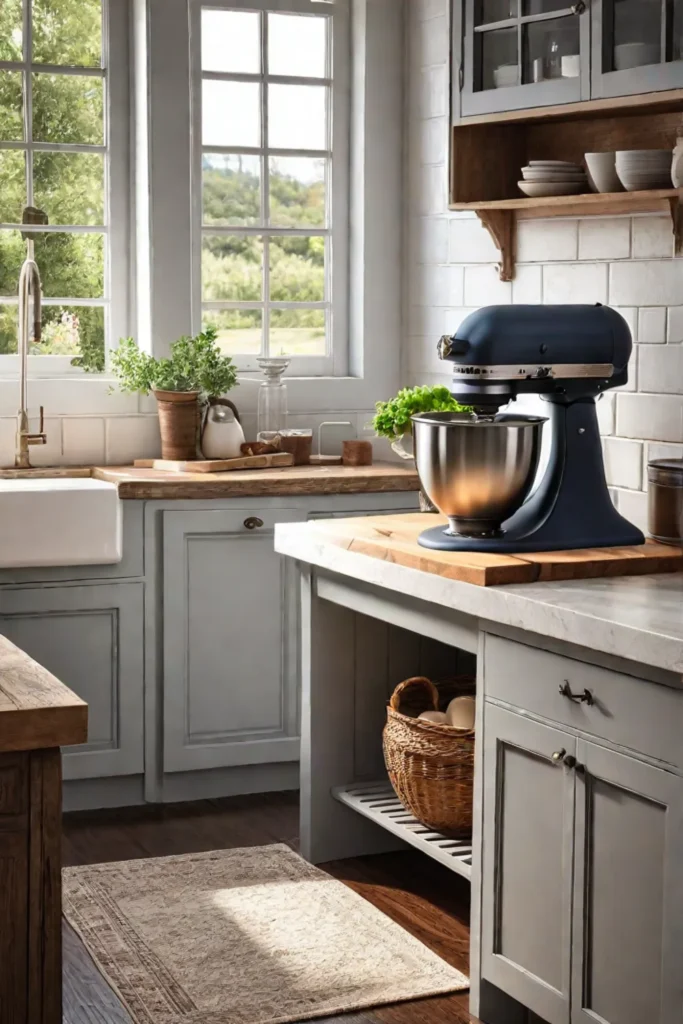
Now, let’s talk dollars and cents. A good multi-functional appliance might set you back $100-$300 upfront, but it can save you upwards of $500 when compared to buying individual appliances. Plus, think of the energy savings from running one appliance instead of multiple!
The Most Sought-After Features in Multi-Functional Appliances
From my experience chatting with fellow DIY enthusiasts and homeowners, here are the features that get people excited:
- Preset Programs: One-touch settings for popular dishes
- App Connectivity: Control and monitor cooking from your smartphone
- Easy-Clean Surfaces: Because who wants to spend hours scrubbing?
- Interchangeable Attachments: Expand functionality without buying a whole new appliance
- Energy Efficiency: Good for your wallet and the environment
Here’s a fun idea: host a “multi-functional appliance potluck” with your friends. Everyone brings a dish made in their favorite multi-use gadget. It’s a great way to test-drive different appliances and get new recipe ideas!
Remember, y’all, the key to mastering the art of multi-functional appliances is to embrace experimentation. Don’t be afraid to try new recipes or cooking methods. These versatile machines are designed to make your life easier and your cooking more adventurous.
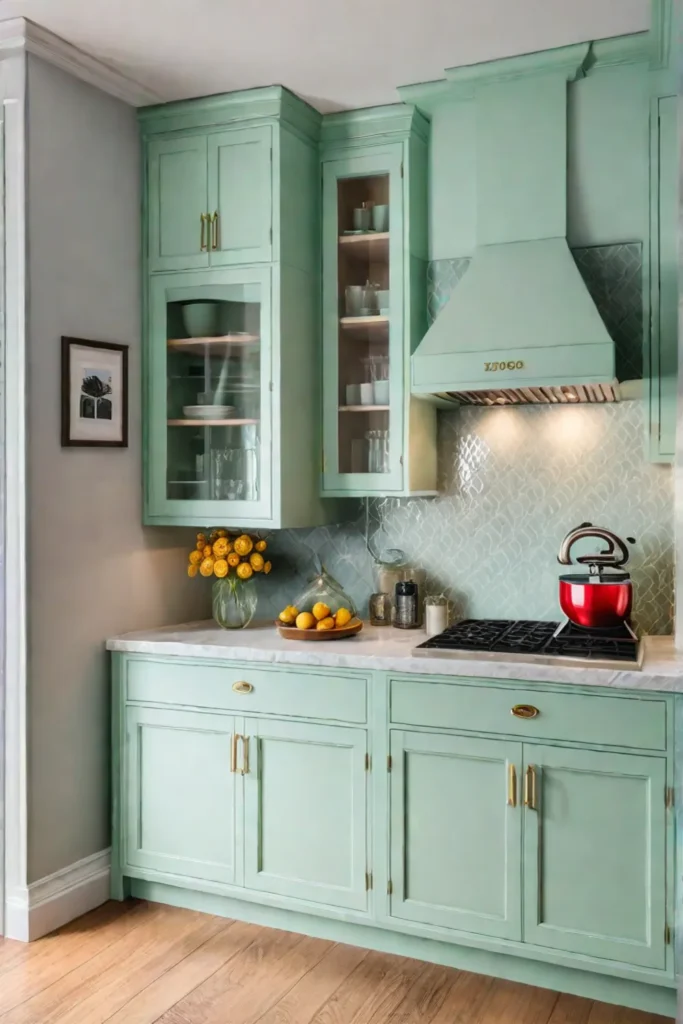
As we wrap up our chat about these kitchen multitaskers, let’s shift gears and talk about another space-saving solution. In our next section, “Seamless Integration: Maximizing Space with Built-in Appliances,” we’ll explore how to take your small kitchen to the next level by incorporating appliances right into your cabinetry and countertops. Trust me, it’s a game-changer for creating a sleek, efficient cooking space!
Seamless Integration: Maximizing Space with Built-in Appliances
Let’s move into the world of built-in appliances. As someone who’s seen his fair share of kitchen renovations, I can tell you that these sleek, space-saving marvels are changing the game in modern kitchen design.
Built-in Brilliance: Exploring Popular Options
Let’s face it, we could all use a little more counter space, right? That’s where built-in appliances come in. They’re not just about looks (though they do look pretty darn good); they’re about making your kitchen work smarter, not harder.
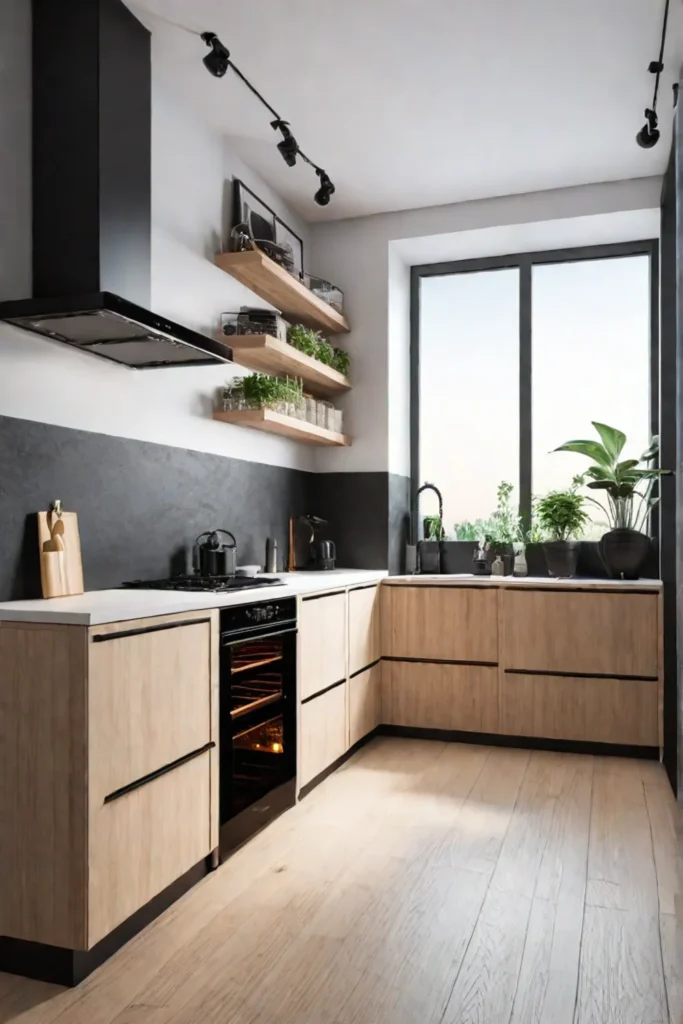
Popular built-in options include:
- Microwaves: Say goodbye to that bulky countertop model!
- Ovens: Double wall ovens are a baker’s dream come true.
- Coffee systems: For those of us who can’t function without our morning brew.
- Dishwashers: Seamlessly blending with your cabinetry.
Fun fact: According to the National Association of Home Builders, over 70% of new home constructions now include at least one built-in appliance. Looks like we’re not the only ones catching on to this trend!
Planning Your Layout: Essential Considerations for Built-in Appliances
Now, before you start tearing out your old appliances, let’s talk strategy. Planning is key when it comes to built-ins. Trust me, I’ve seen what happens when folks skip this step, and it ain’t pretty.
- Measure twice, buy once: Ensure you have accurate dimensions of your space.
- Consider your workflow: Think about how you move in your kitchen.
- Ventilation plan: Especially important for ovens and cooktops.
- Don’t forget about power: Some built-ins may require special electrical setups.
Pro tip: If you’re not confident in your DIY skills, this is one area where it pays to call in the pros. A good kitchen designer can be worth their weight in gold (or should I say, stainless steel?).
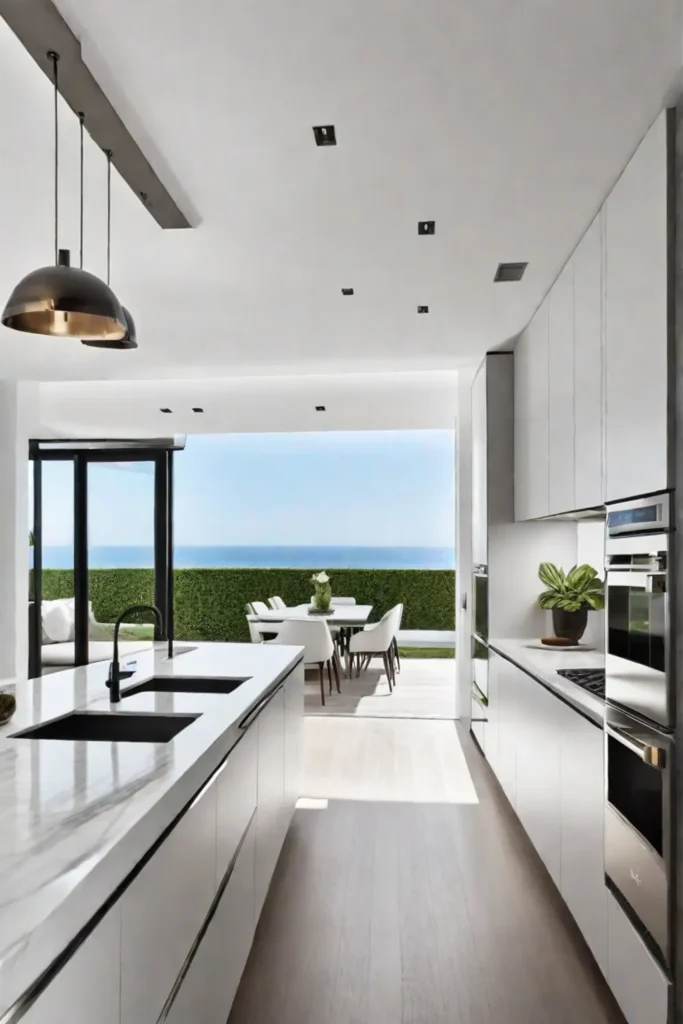
The Cost Factor: What to Expect
Now, I know what you’re thinking: “Craig, this all sounds great, but what’s it gonna cost me?” Well, I won’t sugarcoat it – built-in appliances typically come with a higher price tag than their freestanding counterparts. On average, you’re looking at:
- Built-in microwave: $400 – $1,500
- Wall oven: $1,000 – $3,500
- Built-in coffee system: $2,000 – $4,000
But remember, folks, this is an investment in your home. Not only do built-ins add value, but they also create a high-end, custom look that’ll make your neighbors green with envy.
Pros and Cons: The Real Deal
Let’s break it down:
Pros:
- Sleek, integrated look
- Maximizes counter space
- Can increase home value
- Often more energy-efficient
Cons:
- Higher upfront cost
- Less flexibility if you want to change the layout
- May require professional installation
- Potential for more expensive repairs
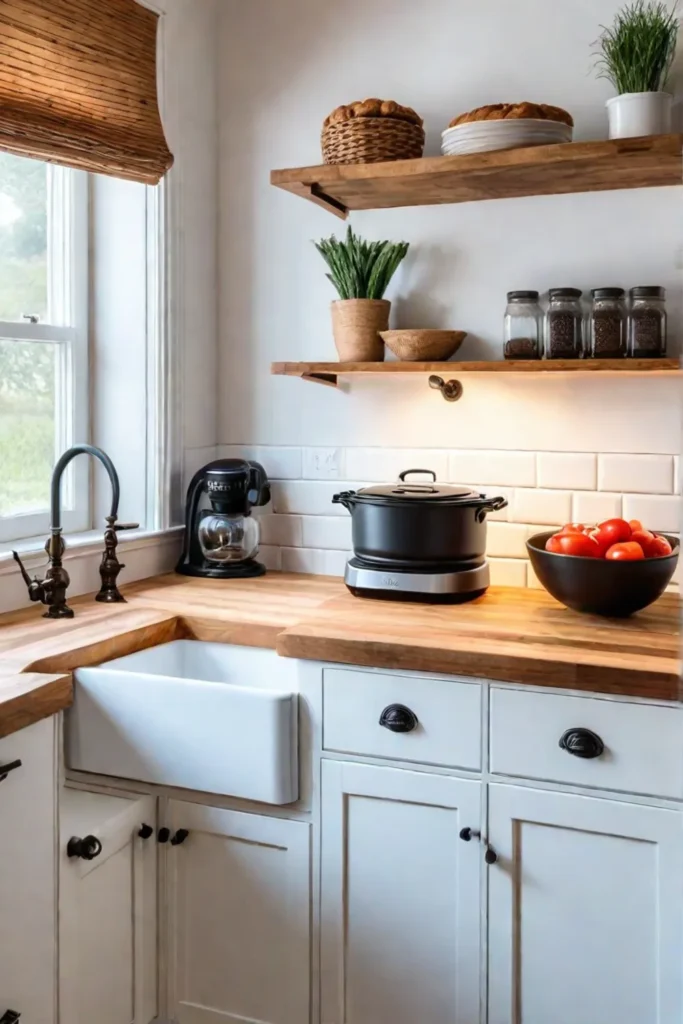
In my experience, the pros usually outweigh the cons, especially if you’re in your forever home or looking to sell shortly.
Key Takeaways
- Built-in appliances create a cohesive, spacious kitchen design.
- Professional installation and careful planning are crucial.
- While more expensive upfront, they can add significant value to your home.
- Consider your long-term kitchen goals when deciding on built-ins.
Remember, y’all, a well-designed kitchen isn’t just about looking good – it’s about creating a space that works for you. And in my book, built-in appliances are a fantastic way to do just that.
As we wrap up our chat about built-in appliances, let’s shift gears and look at another exciting trend in kitchen design. In our next section, “Design Innovation: Space-Saving Features in Modern Appliances,” we’ll explore how even standalone appliances are getting smarter about saving space. Trust me, you won’t want to miss this!
Design Innovation: Space-Saving Features in Modern Appliances
Ready to dive into the world of kitchen wizardry where appliances are shrinking but packing more punch than ever? As someone who’s seen his fair share of cramped Atlanta apartments, I can’t tell you how excited I am about the latest space-saving innovations in kitchen appliances.

Small Wonders: Exploring Innovative Space-Saving Designs
Let me tell you, the days of bulky appliances hogging all your counter space are numbered. Manufacturers are getting seriously creative with their designs, and it’s a game-changer for those of us who love a functional kitchen but don’t have the square footage of a suburban dream home.
- Collapsible Designs: Picture this – a full-sized food processor that folds down to half its size when not in use. I recently installed one for a client, and the look on their face was priceless!
- Nesting Capabilities: Remember those Russian dolls? Well, now imagine your pots, pans, and even some small appliances stacking neatly inside each other. It’s like kitchen Tetris, and it’s oddly satisfying.
- Vertical Storage Solutions: Think up, not out! I’ve seen some genius vertical toaster ovens that mount under cabinets, freeing up precious counter real estate.
Future Forward: Emerging Trends in Small Appliance Design
Now, let’s talk about what’s coming down the pike. The future of small kitchen appliances is looking mighty fine, and it’s all about smart tech meeting space efficiency.
- Multifunctional Marvels: Appliances that can do it all are the new black. I’m talking about air fryers that also work as pressure cookers and dehydrators. It’s like having a Swiss Army knife for your kitchen.
- Smart and Compact: Voice-controlled coffee makers that take up less space than a cereal box. Yes, please! These smart appliances are not just space-savers; they’re life-savers on those groggy mornings.
- Eco-Friendly and Efficient: Manufacturers are focusing on energy efficiency in compact designs. It’s a win-win for your utility bills and Mother Earth.
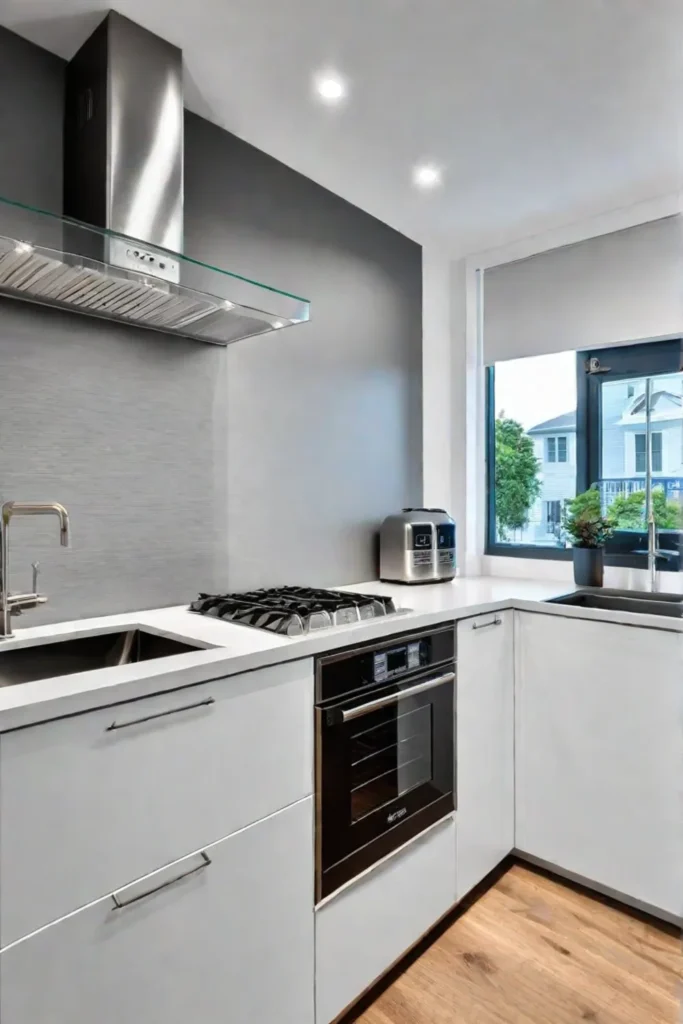
One of my favorite space-saving designs has to be the foldable stand mixer that won the Red Dot Design Award last year. It’s a powerhouse that can knead dough like a pro but folds down to fit in a drawer. Talk about having your cake and eating it too!
When it comes to popular space-saving features, retractable cords and removable parts are topping the charts. And let’s not forget about those stackable cookware sets that are culinary Lego for adults.
Manufacturers are leveraging technology in fascinating ways to create more compact and efficient appliances. They’re using advanced materials that conduct heat better, allowing for smaller heating elements. Some are even incorporating AI to optimize cooking processes in less space.
Remember, folks, when you’re shopping for these innovative appliances:
- Measure your space carefully (trust me, I’ve learned this the hard way)
- Consider your cooking habits and prioritize features you’ll use
- Look for appliances with multiple functions to get more bang for your buck and space
As we wrap up this section on space-saving innovations, it’s clear that the future of small kitchens is looking bright and uncluttered. These smart designs are proof that good things do come in small packages.
Now, let’s shift gears and talk about how to navigate all these choices. In the next section, “Making Informed Decisions: Comparing Features and Functionality,” we’ll break down how to weigh your options and choose the appliances that’ll work hardest for you in your kitchen. After all, a smart kitchen isn’t just about saving space—it’s about making your life easier, one appliance at a time.

Making Informed Decisions: Comparing Features and Functionality
Alright, folks, let’s roll up our sleeves and dive into the nitty-gritty of choosing the perfect small kitchen appliances for your home. As a guy who’s seen his fair share of kitchen renovations gone wrong, I can’t stress enough how important it is to make informed decisions when it comes to these little powerhouses. So, grab a cup of coffee, and let’s get down to business!
Decoding the Details: Understanding Appliance Specifications
Listen, I’ve been there – standing in the middle of a store, eyes glazed over, trying to make sense of all those numbers and fancy terms on appliance boxes. But here’s the deal: understanding these specs is crucial to finding the right fit for your kitchen. Let’s break it down:
- Wattage: This is all about power, folks. Higher wattage usually means faster cooking times, but it also means higher energy consumption. For example, a 1000-watt microwave will heat your leftovers faster than a 700-watt model.
- Capacity: Think about your cooking habits. A 4-slice toaster might be overkill for a solo dweller, but it’s a lifesaver for a family of four.
- Size and dimensions: Remember that time I tried to squeeze a full-sized blender into a tiny apartment kitchen? Yeah, don’t be like me. Measure your available space before you buy!
- Energy efficiency ratings: Look for Energy Star certifications. These appliances might cost a bit more upfront, but they’ll save you money on your energy bills in the long run.

Prioritizing Your Needs: Essential Features vs. Nice-to-Haves
Now, let’s talk about features. It’s easy to get starry-eyed over all those shiny buttons and fancy displays, but ask yourself: do you need a toaster that plays the national anthem? (Okay, I made that up, but you get the point!)
Essential features to consider:
- Durability and build quality
- Easy-to-use controls
- Safety features (auto shut-off, cool-touch exteriors)
- Easy to clean (removable parts, non-stick surfaces)
Nice-to-have features:
- Multiple cooking presets
- Digital displays
- Smart connectivity (but only if you’re into that sort of thing)
Remember, folks, the goal is to find appliances that make your life easier, not more complicated. I once bought a coffee maker with so many buttons it felt like I was launching a space shuttle every morning. Learn from my mistakes!
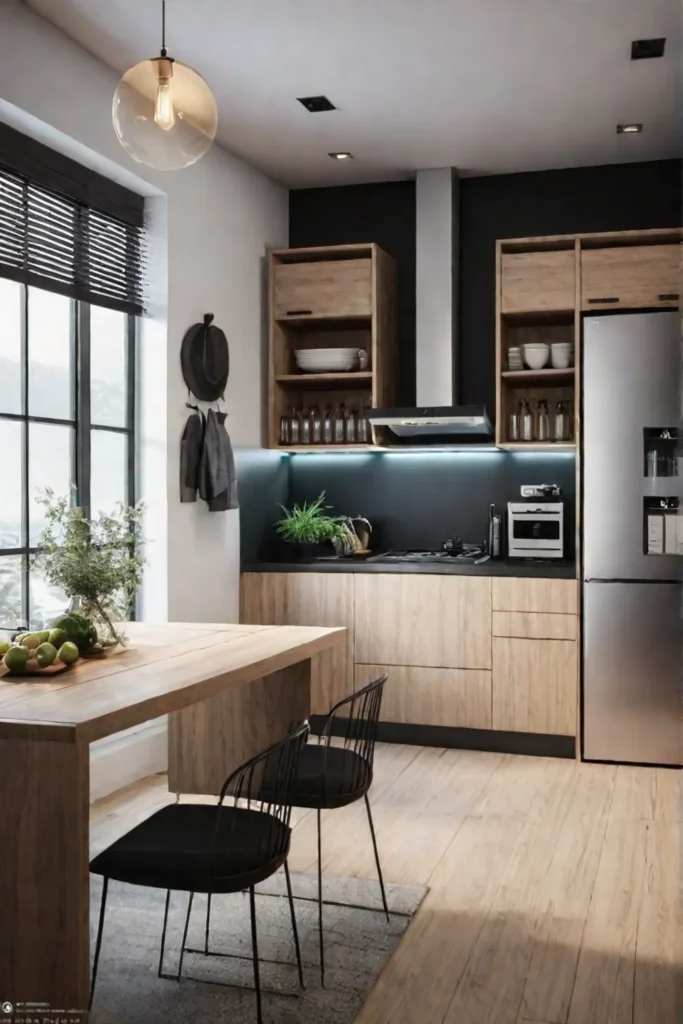
The Scoop on Reviews and Ratings
Now, here’s a startling fact for you: according to a recent survey, 35% of consumers reported issues with small kitchen appliances within the first year of purchase. Yikes! This is why reading reviews is crucial. But where should you look?
- Consumer Reports: These folks are the gold standard for unbiased reviews.
- Wirecutter: They do in-depth testing and offer great recommendations.
- Amazon customer reviews: Take these with a grain of salt, but they can provide real-world insights.
Pro tip: Look for reviews that mention long-term use. That fancy espresso machine might work great for a week, but how does it hold up after a year of daily use?
Warranty Wisdom
Speaking of things going wrong, let’s talk warranties. Most small kitchen appliances come with a one-year limited warranty, but some brands offer more. For example, KitchenAid offers a five-year warranty on their stand mixers. Always read the fine print and consider extended warranties for pricier items.
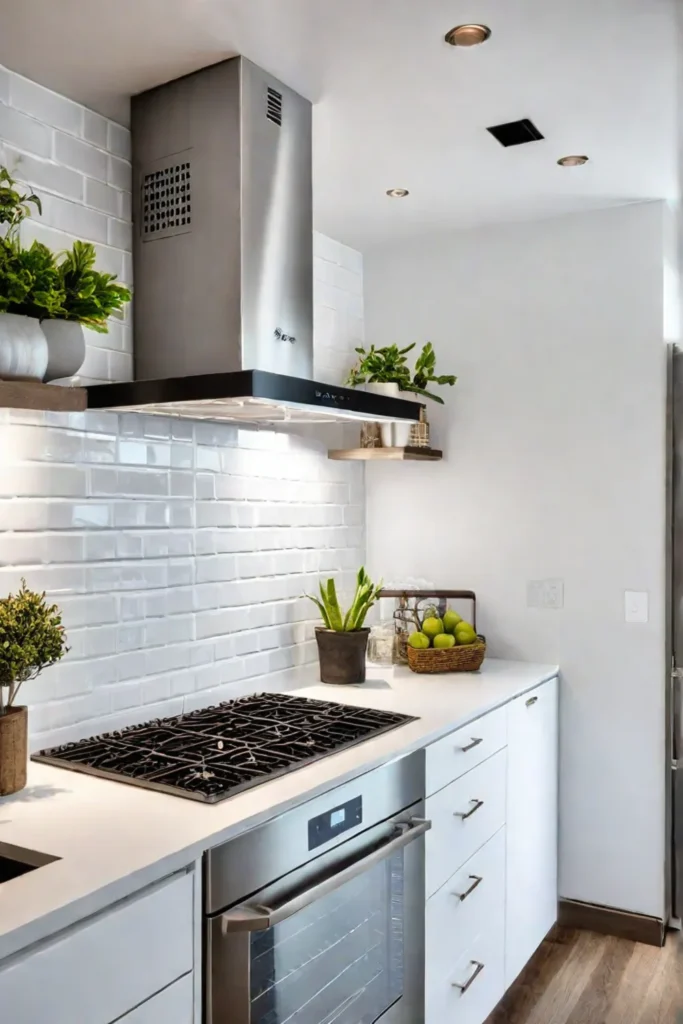
The Craig Johnson Checklist for Appliance Comparison
To wrap things up, here’s a handy checklist I’ve developed over years of trial and error:
- Define your needs and budget
- Research and compare specifications
- Read reviews from multiple sources
- Check energy efficiency ratings
- Understand the warranty terms
- Consider long-term durability and repair costs
- Measure your space (twice!)
- Prioritize essential features over gimmicks
Remember, folks, the perfect appliance is the one that fits your needs, your space, and your budget. Don’t get swayed by fancy marketing or peer pressure. (Trust me, you don’t need a $500 toaster just because your neighbor has one!)
As we wrap up this deep dive into appliance selection, it’s time to step back and look at the bigger picture. In our next section, we’ll bring everything together and reflect on how these small appliances can transform your kitchen experience. So, stick around as we head into the conclusion and tie up all the loose ends in this ultimate guide to small kitchen appliance selection.
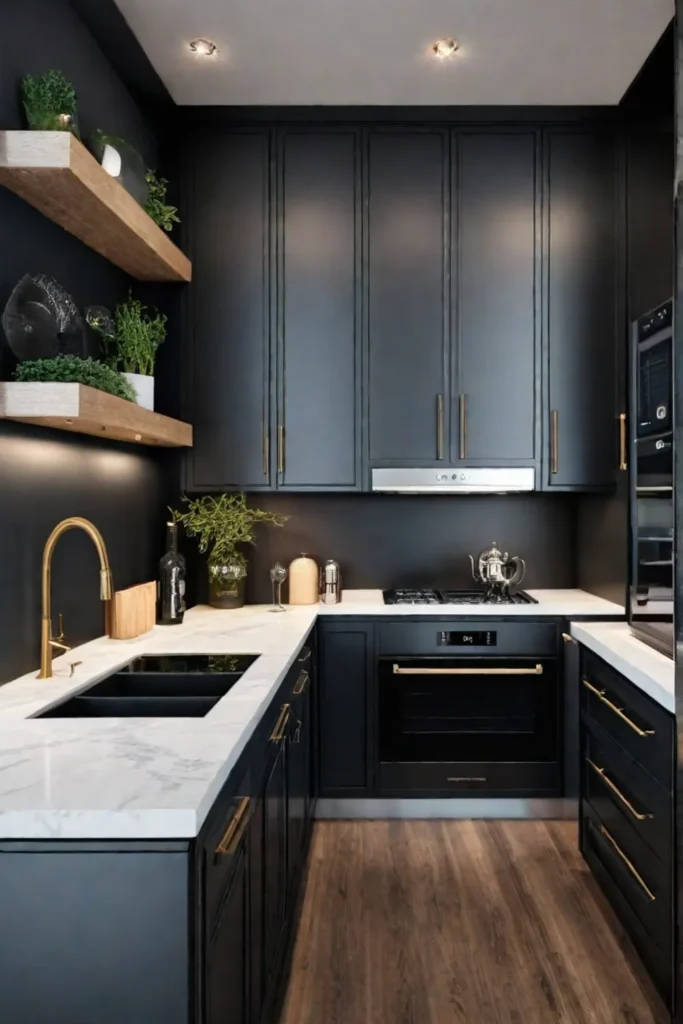
Wrapping Up
Well, folks, we’ve covered a lot of ground in our journey through the world of small kitchen appliances. From space-saving wonders to multi-functional marvels, we’ve explored how these compact culinary companions can revolutionize your cooking space. Remember, it’s not about having the biggest kitchen – it’s about making the most of what you’ve got. And with the right selection of appliances, even the coziest of kitchens can become a gourmet paradise.
As we wrap up, I want to leave you with one last thought: your kitchen should work for you, not against you. Don’t be afraid to think outside the box and get creative with your appliance choices. Maybe that compact air fryer will become your new best friend, or perhaps a built-in coffee system will be the game-changer you never knew you needed. Whatever you choose, make sure it fits your lifestyle, your space, and your cooking style. And hey, if you ever need a hand figuring out how to squeeze just one more gadget into your kitchen, you know who to call. Happy cooking, y’all!
